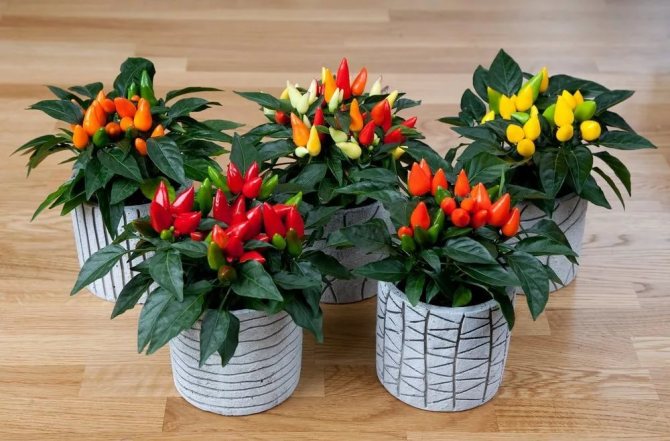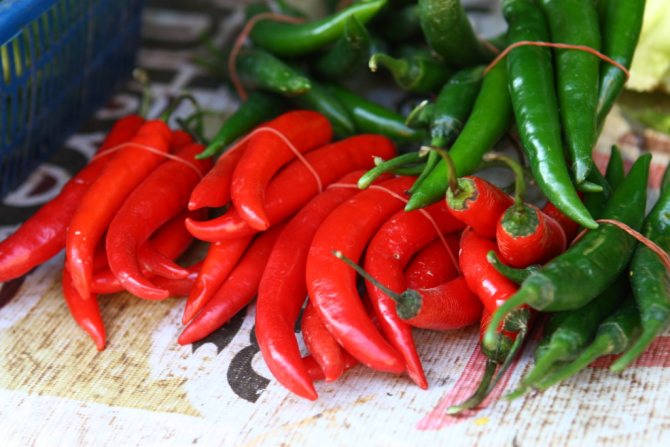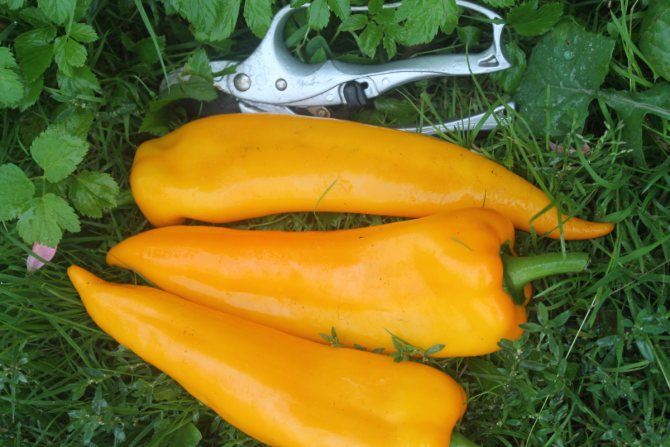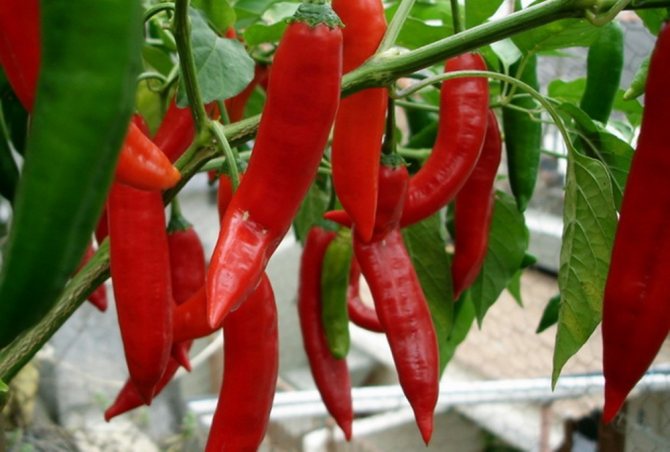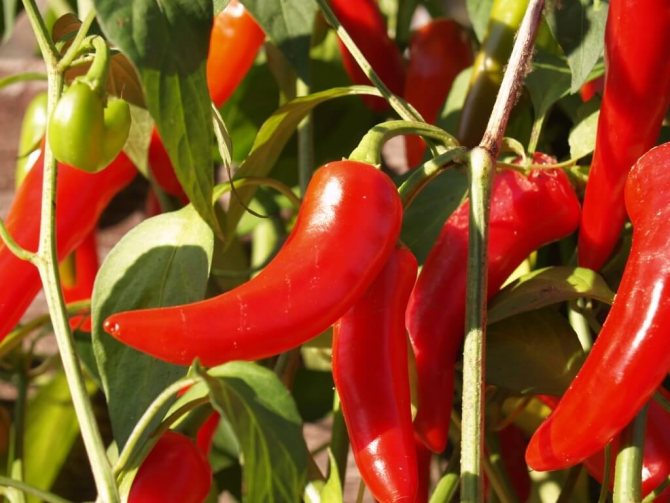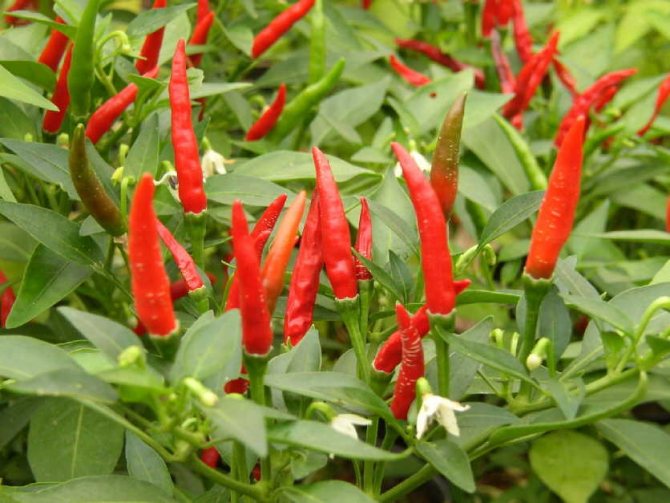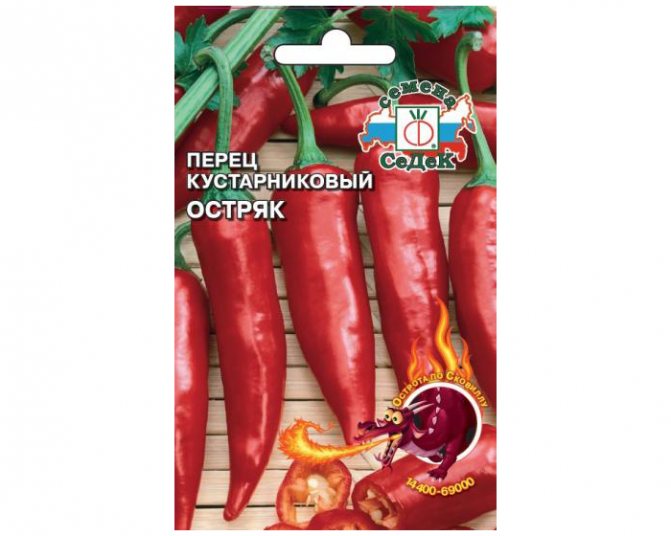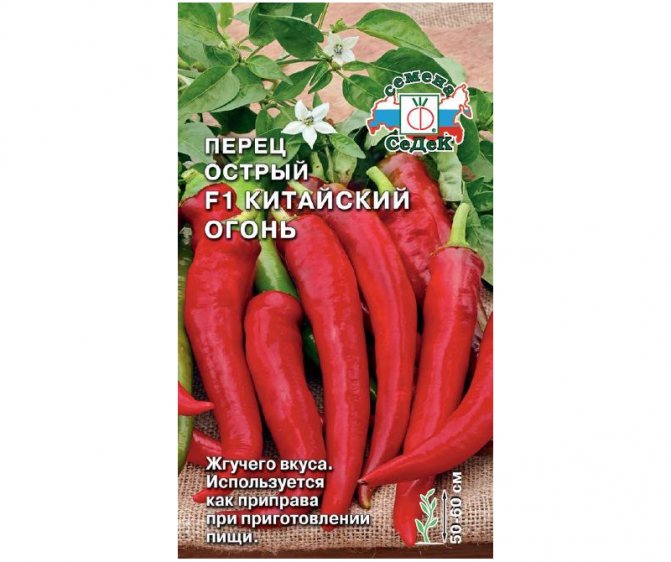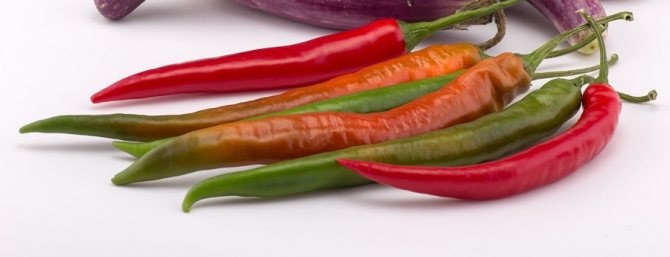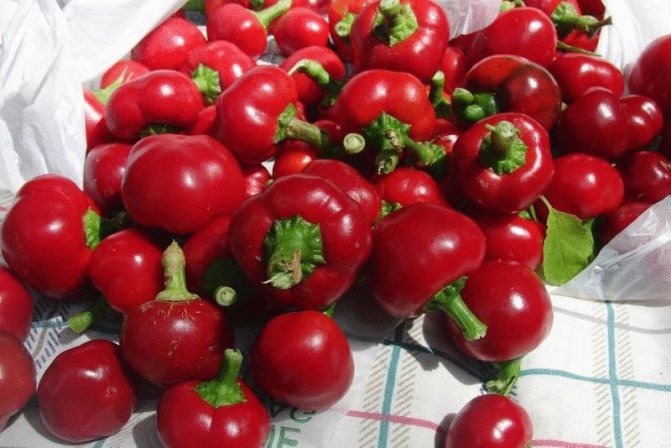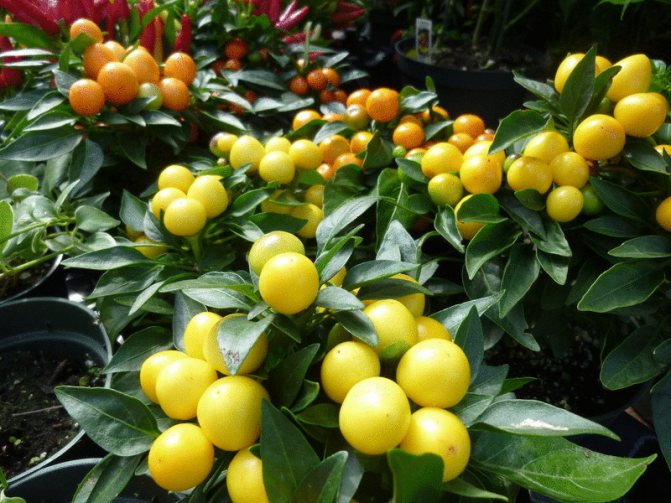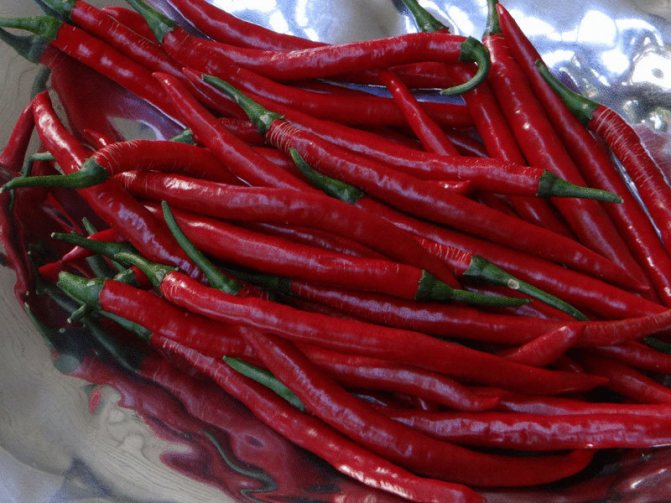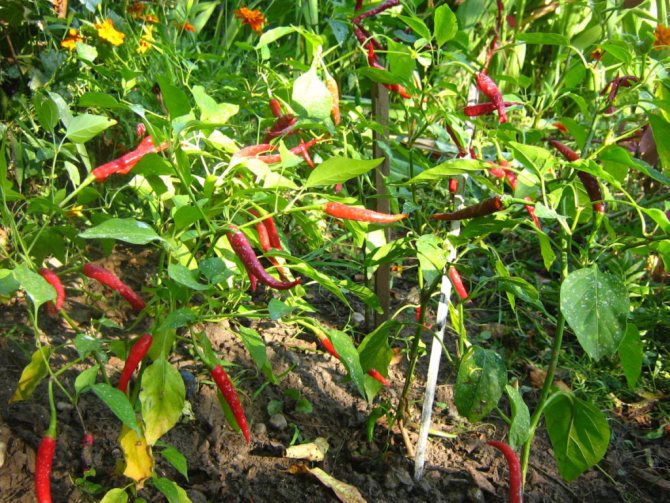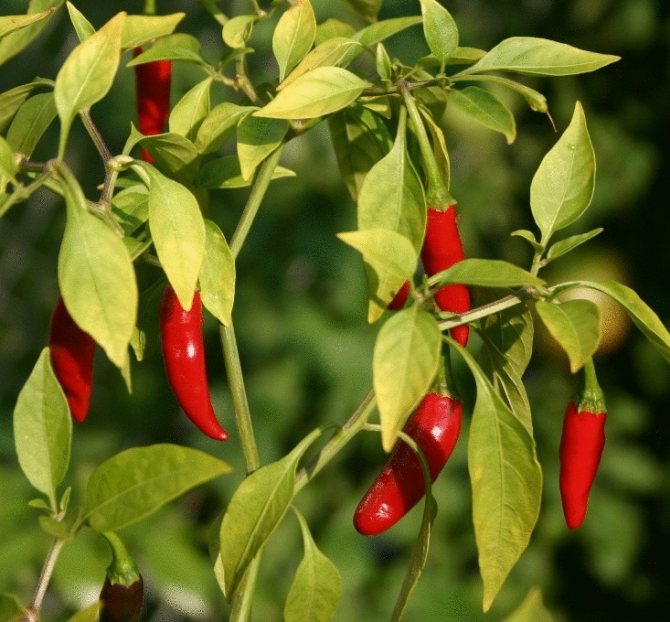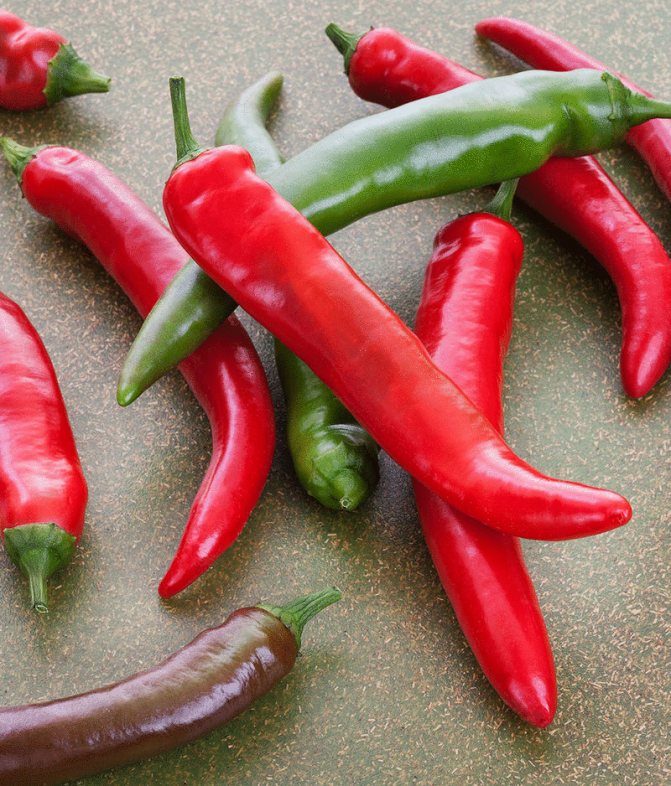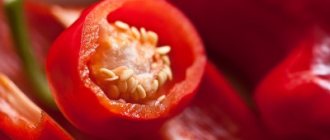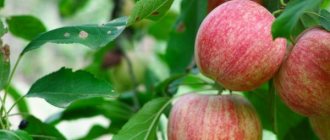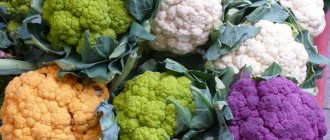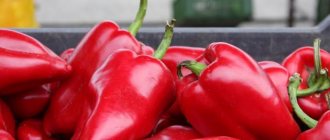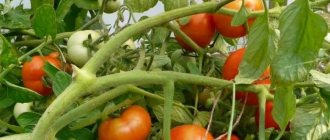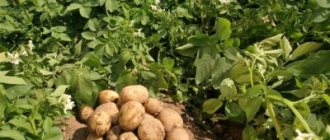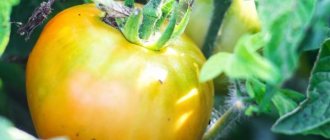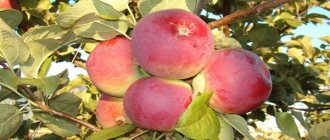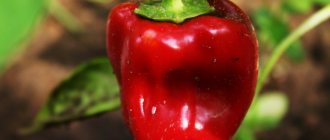Peppers are divided into two main groups: vegetable (sweet) and hot or spicy. The fruits of the first group are more widespread and popular. But even without burning pods, it is difficult to imagine various national cuisines. Also, this spice plant is especially valued in medicine, including folk medicine, for its pain relieving and diaphoretic properties, as well as its ability to stimulate appetite. The first crop of hot pepper was harvested about 6,000 years ago in Bolivia (the home of this crop).
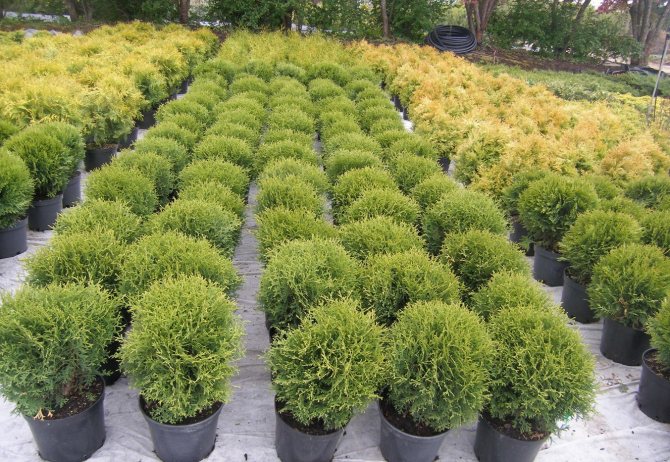
Currently, there are more than 3000 varieties of hot peppers around the world. They differ in size and color, as well as in the degree of pungency: from slightly pungent to fiery stinging. Since there is a huge assortment on the market, making the right choice is not easy. What are the best hot peppers? Which seeds are suitable for outdoor use and which are suitable for growing on the balcony?
The main types of hot pepper
The history of growing an amazing vegetable crop begins far back in the past. Pepper is believed to be native to Central and South America. It is currently quite popular and grown all over the world.


Pepper surprises with its variety. There are more than 3000 varieties of this crop. Plants are grouped according to their characteristic features. For hot peppers, this parameter is the quality of the fruit. The classification takes into account color, shape, aroma and taste. The tests are based on determining the presence of capsaicin in the fruit, the content of which affects the pungency of the vegetable. Measurements of this parameter are carried out on the Scoville scale. All hot peppers are also called chili. They are grouped into the genus Capsicum. The plant that "bites" is the main characteristic of all chili included in it. The genus is a full member of the Solanaceae family. It consists of five domesticated species. The following can be distinguished:
- Capsicum annuum.
- Capsicum chinense.
- Capsicum baccatum.
- Capsicum frutescens.
- Capsicum pubescense.
In addition, twenty-six wild species are known.
Long pepper
Long pepper is the fruit of a number of plants of the species Piper longum - a climbing evergreen shrub - vines from the pepper family. This genus includes over 700 plants. Liana reaches a height of 8 meters, elongated leafless, petiolate, light green. It blooms with small white flowers, collected in large spike-shaped inflorescences. After flowering, it bears fruit with round green peas. After drying and processing, the fruits turn black or dark brown. The seedlings of the plant grow together with each other, giving the plant an unusual appearance.
Liana grows in humid, tropical climates. The plant is demanding on sunlight and grows well only on fertile soil.
The long pepper is native to India. In India and Indonesia, as well as in some other regions of the tropical and subtropical belts, it is currently cultivated on an industrial scale.
Long peppers are popular in Eastern cooking, especially Indian ones. It was this pepper that Europeans first learned; it was brought from India to Europe by Arab merchants in the 14th century AD. Historically, long peppers came to Europe much earlier than black ones, they served as a weight standard and a means of calculation.
Spice is included in the recipes of many Indian dishes, it is also added to a mixture of spices (included in the world famous spice mixture Kari) and spices.Long pepper is popular in some areas of northern Africa, where in the 8-10th century. it was introduced by Arab merchants. But in Europe, at present, this spice is used quite rarely, despite the fact that during the Roman Empire, long pepper was more common than black pepper and was valued three times more.
In ancient medicine, long pepper was used for medicinal purposes, primarily because of its excellent antiseptic effect. Long pepper was especially often used by ancient doctors to treat gastrointestinal disorders.
The flavor of this spice is more pungent than black and slightly sweeter. The aroma is intense spicy.
The hottest peppers
The varieties belonging to the Capsicum chinense species are considered the most pungent. The semantic meaning of this species is a plant “from China”. However, this definition is considered unfortunate. Peppers of this type have nothing to do with China. The homeland of plants is the territory located in the Amazon River basin. All varieties of this species are thermophilic and hygrophilous. They have the highest capsaicin scores on the Scoville scale. This group is quite numerous. Distinctive features of the plants are a strongly pronounced pungent taste and a characteristic fruity aroma. These qualities have determined its popularity among culinary specialists. For the preparation of all kinds of sauces, such hot peppers are used. Varieties of this type can be divided into several groups.
But this is no longer a record


In the same year, a pepper grew, which God-fearing breeders dubbed Pepper X. 3 180 000 EU - today it is an absolute record for hotness, which can only be surpassed by concentrates created in chemical laboratories. It is possible that the blood of the Alien is composed of something similar. Pepper X is not tried in chili-eating contests, because most of the contestants fall off on the Caroline Reaper.


By the way, the Englishwoman Sid Barber, who, apparently, has the most tinned throat in the world, has become the champion in eating chili in Clifton for several years in a row. It cannot be ruled out that she is a robot.
Popular Habanero
Hot peppers have been found in Mexico. The pungency of varieties in this group varies from one hundred thousand to one million units on the Scoville scale. They are considered the record-holders for hot qualities among chili peppers. In 2000, the Habanero Red Savina variety was included in the Guinness Book of Records. The peculiarity of the taste of this group of plants is the citrus flavor. Over the years, as a result of selection work, various varieties have been obtained, which are successfully grown in many countries of the world. When leaving, it should be borne in mind that the plants are thermophilic and photophilous. The varieties of this family are grown in seedlings. The timing of sowing seeds to obtain planting material falls on February-March. Seedlings are planted in open ground in well-lit areas with sufficient soil fertility. When leaving, regular watering and fertilization is required.
Benefits to the human body and composition
The rich chemical composition of the vegetable makes hot pepper very useful for the human body. At the same time, it should be used by both men and women, but on condition that there are no acute diseases and diseases in the chronic stage. The plant contains a large amount of essential oils. Pepper also contains a lot of vitamin C, which stimulates the immune system and strengthens it. Vitamins of group B, as well as vitamins A, K, PP, E and beta-carotene are contained in sufficient quantities. In addition to vitamins, hot pepper contains such minerals as selenium, manganese, copper, zinc, iron, phosphorus, potassium, sodium and calcium.
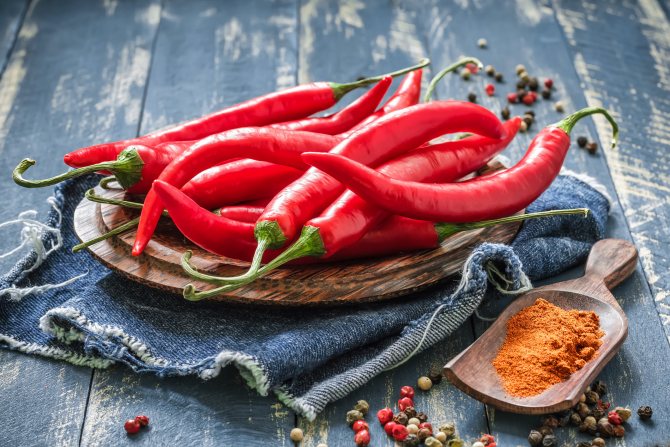

Capsacin, which is very abundant in the plant, gives a sharp bitterness and even pungency to the vegetable. Hot peppers contain twenty times more of this substance than sweet peppers.There are some varieties that, just by touching the skin, leave burns on it. It is noteworthy that even the leaves of the plant contain this substance.
Scientists note that the chemical composition of the product provokes the production of the hormone of happiness and increases appetite. But it is necessary to eat bitter pepper in moderation and only for those who do not have problems with the stomach, kidneys and esophagus.
The health benefits of a vegetable are as follows:
- Regular and moderate use of the product will help to cope with insomnia, as well as improve the functioning of the nervous system.
- The hematopoietic function of the body is normalized, and, as a result, the work of the cardiovascular system improves. But the product should be used and eaten very carefully and only if the doctor permits, since in case of diseases in the stage of exacerbation, a vegetable can have a negative effect.
- The work of the brain is stimulated, oxygen enters all organs faster.
- The risk of developing atherosclerosis, asthma and renal failure is reduced.
In recent years, scientists have carried out a lot of research and proved that hot pepper can slow down the growth of cancer cells. But do not assume that the vegetable is a panacea for the disease. This is only prevention, which reduces the risk of contracting a terrible disease.
For medicinal purposes, bitter pepper is recommended to be consumed not only fresh, but also infusions, powders or decoctions can be prepared from it.
- For colds, it is recommended to grind red pepper and mix it with honey. The prepared mixture is consumed 3 times a day with water. It has antibacterial properties and also helps to reduce fever. Alcohol tinctures are also used for colds. To prepare them, 90% alcohol is required. Pepper is mixed with liquid in a ratio of 1:10, respectively. The tincture is kept for at least three weeks, and then it is applied, but only externally, for example, you can rub your feet with it, on which you then put on warm socks. These treatments increase blood flow and help keep you warm.
- For joint pain, a tincture is used based on three ingredients: ground red pepper, vegetable oil and kerosene. As a rule, ten pods contain one glass of oil and kerosene. The liquid must be insisted for a month, and only after that it can be used. It is rubbed into problem areas (for example, elbows, knee joints), put on warm clothes to get a warming effect, and left overnight.
- To cleanse the intestines, you should eat red hot pepper powder. You need to eat very little, literally at the tip of a knife. It will be much tastier if you sprinkle the seasoning on the bread.
If you look closely at the medications that are produced to eliminate pain in the joints, with sciatica, rheumatism, then all ointments contain hot pepper.
If it so happened that too much hot pepper was eaten, then you can get rid of the burning sensation in two ways, the first is to drink the vegetable with milk or natural yogurt, and the second is to drink lemon juice.
Bitter pepper is no less useful for losing weight. The product accelerates blood circulation, which helps to break down fats faster. In addition, the vegetable has very little fat and carbohydrates, and its calorie content is low. Someone will be surprised how hot pepper can help you lose weight, because it only improves appetite. In fact, such a supplement affects metabolism, which contributes to active weight loss. By adding quite a bit of hot pepper to food, you will already be able to burn about 45 kcal.
Habanero Chocolate Variety (Congo Black)
A powerful, highly branched plant with large oval leaves and reaches a height of 120 cm.
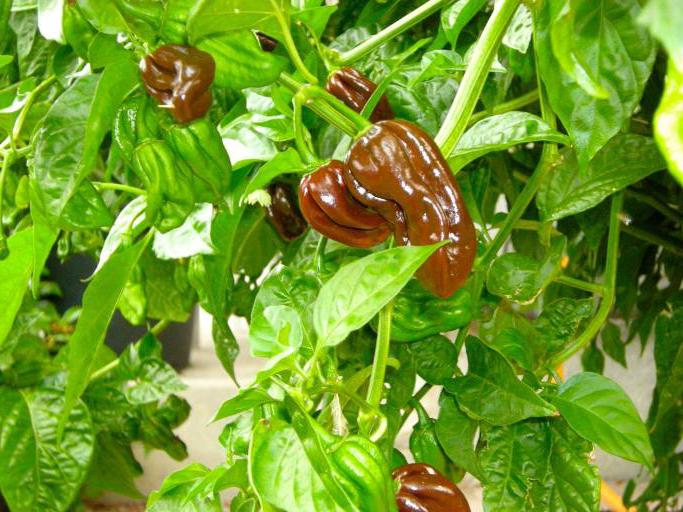

Unripe fruits are dark green in color. Gradually, as it ripens, the color changes. The peppers take on a chocolate brown hue. Their dimensions are: width - 3 cm; length - 6 cm.
The period for the fruits to reach technical maturity is 100 days. Ripe fruits are quite fleshy.They have a special fruity aroma and a fairly high pungency. It is 425 thousand units on the Scoville scale.
Habanero Orange variety
Large branchy bushes reach a height of 90 centimeters. However, the orange fruits are quite small and thin-walled. They grow up to 4 centimeters long and up to 3 cm wide.
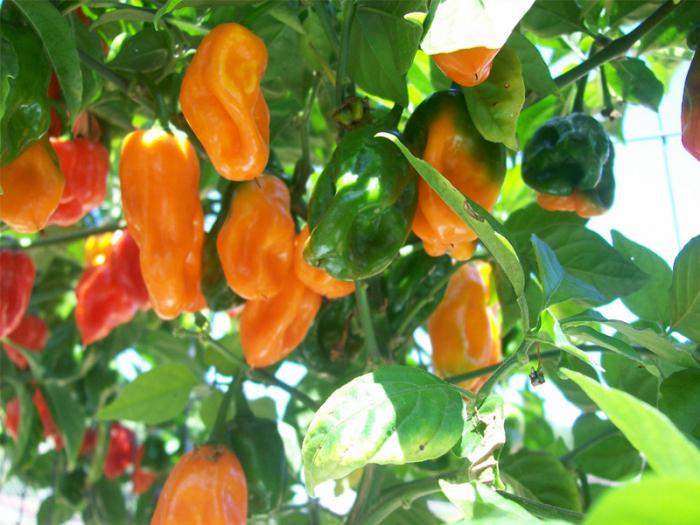

The wrinkled pod is oval in shape. Differs in early ripening. It takes 85-95 days to reach technical maturity. Has a pungent taste. Scoville acuity is 325 thousand units.
Trinidad Small Cherry
The variety is early maturing. It will take from 70 to 80 days until the fruit is fully ripe. Outwardly, a rather beautiful plant. A powerful, highly branched bush reaches a height of 50 to 90 cm. It is strewn with many bright orange or red fruits.
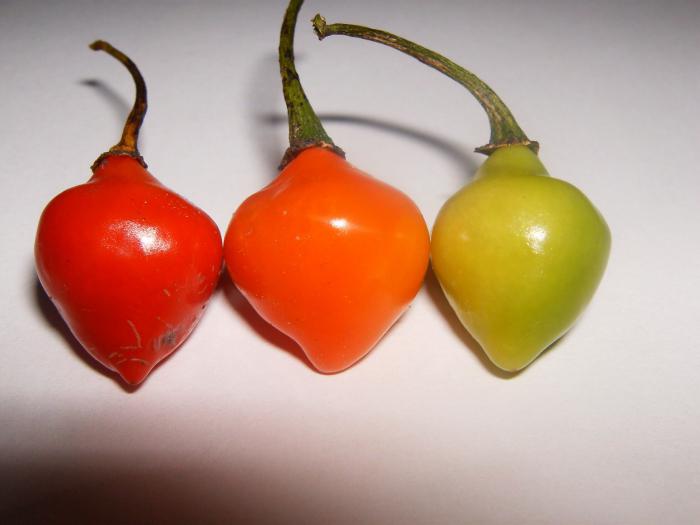

Their dimensions do not exceed 2.5 cm in diameter. However, this feature does not diminish the value of the variety. The pod is quite juicy and soft. The cultivar's highlight is its characteristic cherry aroma. The small fruits are cherry-like in size and shape. The pungency of this pepper on the Scoville scale is 160 thousand units.
Noteworthy are the late-ripening varieties of this series Trinidad Moruga Scorpion Red, Trinidad Moruga Scorpion Yellow.
Family 7 Pot
This series includes mainly late-ripening chili varieties. The period for obtaining fruits of technical maturity is 120 days.


They are distinguished by a rather unusual shape of the fruit, as well as a high content of capsaicin. These hot peppers have a rather hot taste. The varieties of this family are close relatives of the Trinidad scorpions. The main similarities are the unusual shape of the fruit and the characteristic fruity aroma.
Like all plants of this species, chiles of this family are grown in seedlings. When planting in open ground, attention should be paid to soil fertility. For the normal development of the plant, warmth, good illumination and regular soil moisture, timely fertilization are needed.
The best mid and late ripening varieties
Late maturing. Grows indoors. The fruits are red, weighing up to 20 g. Medium spicy taste. The yield is good. It is used for the manufacture of paprika, salt, conservation.
Astrakhan
Mid-season ripening period. High yield, cultivated in open field with different climatic conditions. The fruits are small, red. The taste is acutely pungent. The pungency is determined by the capsaicin content. It is successfully used for culinary and medicinal purposes. Pepper tincture will relieve sciatica. Fresh pulp will heal abscesses. Hot pepper stimulates appetite, helps with pain, fever.
Read also: Spiraea japonica Green Carpet
Ram horn
Mid-season. Unpretentious in cultivation, but does not tolerate stagnant water. With proper care, it gives a high yield. The pods are elongated, twisted like a ram's horn. The taste is not very pungent when well watered. If there is little watering, hot weather, the pepper will grow sharper. Suitable for trade, export.
A relatively new species. It grows in greenhouses and in a room (seeds are pre-planted for seedlings). The yield is high. Fruits are thin, of medium length. The bushes are tall, reaching one and a half meters. It is imperative to tie up. The taste is relatively pungent. It is used for cooking, canning, processing into powder.
Shrub hot peppers. Grows on bushes in bunches upward. Fruits are orange-red, small. The pulp is juicy, fleshy, spicy. Productivity is high, disease resistant. The famous Tabasco sauce is produced from this variety.
Pepper 7 Pot Primo
This variety was nicknamed the "fire demon". The unusual shape of the fruit resembles a scorpion. The bright fruits are red in color.
At the end of each pod is a scorpion-like sting-like process.Exotic appearance is combined with a pleasant fruity aroma. This variety is considered the record for hotness. The content of capsaicin on the Scoville scale ranges from eight hundred thousand to one million units. A tall, highly branched, powerful plant can reach a height of 1.3 meters.
The best spicy peppers outdoors
Medium early, tall. Grows up to a meter in height. The bush is strong, lush. The fruits are large, conical, bright, red, spicy with a pleasant aroma.
Early, with a high yield. Below average height, cone-shaped fruits, red, strong smell, pungent taste.
The Queen of Spades
Mid-season. Bushes are small, spherical. There are a lot of fruits, of varying degrees of maturity and color. It looks very nice. Grows well in shady areas. The fruits are cone-like, growing upward. The taste is spicy with sweetness.
Dragon tongue
Mid-season. The bushy plant grows up to a meter in height, unpretentious to care for. Ripe fruits are long, rich red color, burning, with a pleasant aroma.
Mid-season. The bush is small, semi-spreading, grows up to 70 cm... The fruits are long, proboscis-shaped, red. In a section with a thickness of 1.5-2 mm. High resistance to cold weather, high yield. Low aroma, semi-pungent taste.
Varieties of the species Capsicum annuum
Annual plants are the semantic meaning of this species. But this definition is not entirely correct. Chiles of this species are perennial plants of the Solanaceae family. However, they are mostly grown as annuals or biennials. Chile is a tropical plant. Long-term cultivation is possible under suitable growing conditions or in greenhouses.
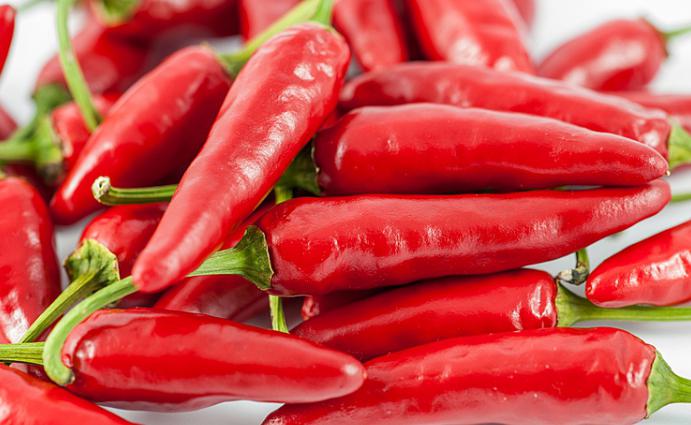

Capsicum annuum vegetable peppers are branchy bushes, reaching a height of 30 to 50 cm. The fruits of such chili are quite fleshy and have a pleasant taste. Unlike the previous species, they are less sharp and have a different shape and color. Varieties of this type are distinguished by early ripening periods. The period of obtaining fruits of technical ripeness ranges from 70 to 80 days.
They are grown mainly in seedlings. The main requirements are soil fertility and looseness. Well-lit, draft-protected areas are suitable for growing. During the period of growth and ripening of fruits, regular watering and fertilization are necessary. These are fairly common hot peppers that are popular. Capsicum annuum is represented by five domesticated groups, such as:
- cherry pepper - Cerasiforme;
- cone peppers - Conoides;
- red cone-shaped peppers - Fasciculatum;
- bell, or sweet peppers - Grossum;
- chili, or cayenne pepper - Longum.
Hot peppers are represented by a numerous order of plants. The cultivars belong to families such as Jalapenos and Cayenne pepper.
The best varieties of indoor peppers
The culture includes a huge number of species, many of which can be grown right on the windowsill. It is important to understand that pepper is a tropical plant that is not adapted to the typical Russian climate. Therefore, deciding to have this unusual "flower" in the apartment, you should take care of creating the necessary conditions. The most important is the organization of additional lighting, especially in the cold season.
Indian summer
This variety is considered relatively unpretentious. Feels comfortable in the shade, undemanding to watering. It can grow in an apartment as a perennial plant, as well as in a garden bed as an annual. The shrub reaches a height of 50 cm, the fruits are spherical and have a bittersweet taste.
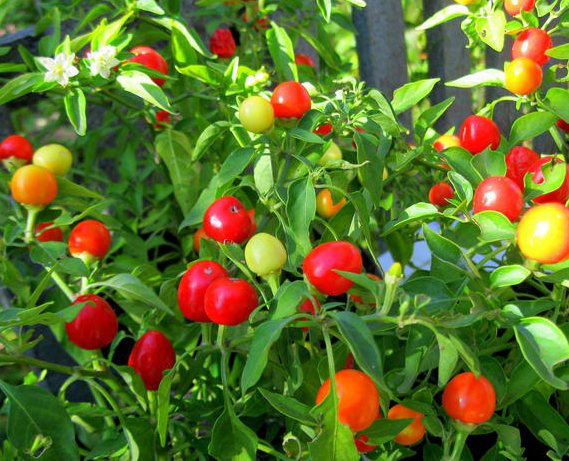

The Indian Summer variety is considered relatively unpretentious.
Hungarian yellow
The culture perfectly tolerates temperature fluctuations, frost. Fruits resemble a cone in shape, during ripening they are characterized by a yellow color, in a ripe form - red. The height of the shrub is 20-30 cm.The peppercorns are sweetish in taste, medium spicy.
Goldfinger
The variety is very light-requiring and gives a bountiful harvest with proper lighting. Fruits 10 cm in size, yellow. Culture is often grown exclusively for aesthetic purposes.
Filius Blue
Perennial. Unripe pods are purple, ripe pods are red. A shrub that grows up to 25 cm needs abundant soil moisture, spraying and sufficient light.
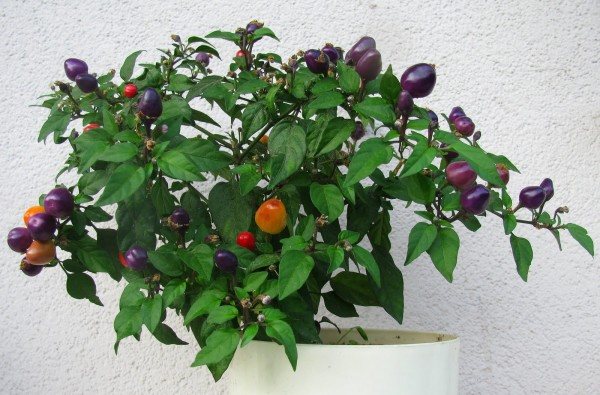

Filius Blue
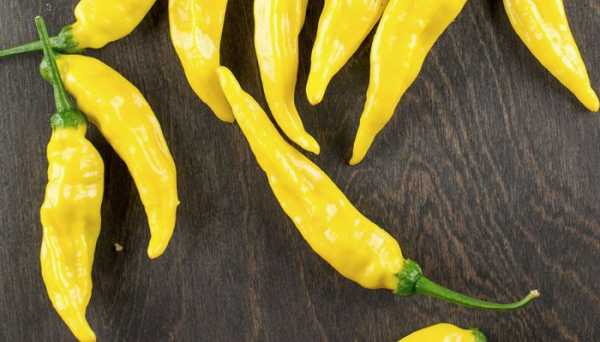

Hungarian yellow
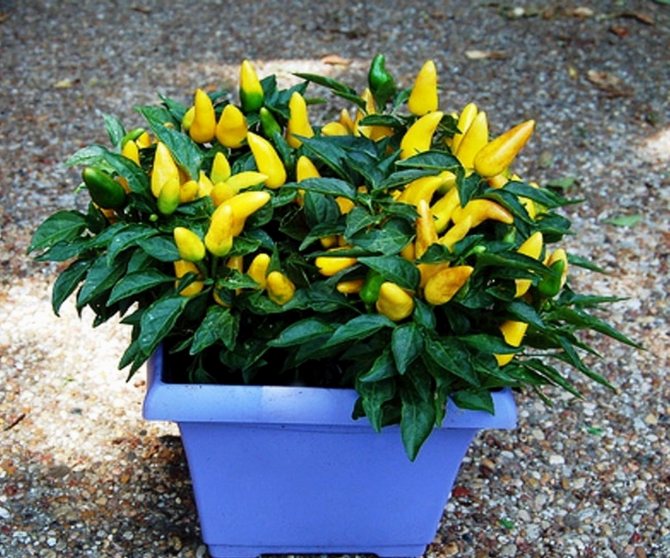

Goldfinger
Mexican chili jalapenos
Heat-loving vegetable peppers are grown as a perennial crop in Mexico and the southern United States. In countries with cold climates, these plants are most often grown in greenhouses. Greenhouses or conservatories are suitable for this. Chili data feel good on the windows of city apartments. The fruits of the varieties of this family are elongated pods.
They are green in color, which, when ripe, changes to red or yellow. The pungency of the fruit is not very hot. The flowering period lasts from spring to the end of the summer period. This promotes the conveyor ripening of the fruit. This characteristic makes the plants quite attractive when grown at home. Hot indoor peppers will delight with beautiful flowering and numerous burning fruits. Home-grown varieties can be found in the Jalapeno family.
Characteristics and description of the culture
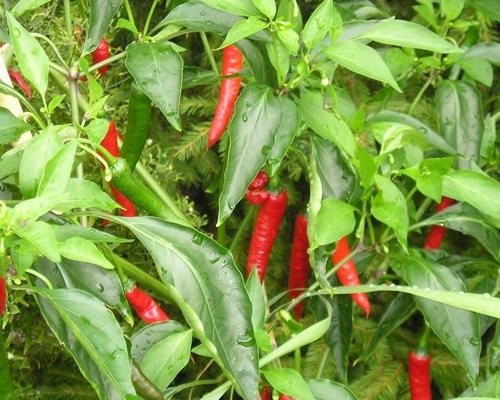

It may be interesting How to feed pepper with yeast: cooking recipes "Cow's ear" pepper: large-fruited with a persistent aftertaste Top dressing of pepper seedlings: when and what to feed, types of fertilizers
The plant can be of different heights from 30 cm to 2 m, there are a lot of varieties of varieties. The leaves of the bush are oval in shape with different shades. They are also light green and even purple. Vegetables are pods, sometimes their shape changes depending on the variety. The fruit reaches 17 cm in length. As the fruit develops, the color of the fruit changes. When it is ripe, the shade is most often red.
There are several groups of peppers in terms of ripening:
- early maturing;
- mid-season;
- late ripening.
Summer residents choose a variety depending on the timing, height of the bushes and the pungency of the fruit. After all, they can be planted both at home and outdoors, in greenhouses and hotbeds.
Note!
To obtain a good harvest, this crop is grown using seedlings. They start sowing from about February 15th. Since this vegetable is a heat-loving plant, it is necessary to observe the temperature regime.
Peppers are very useful, they contain a lot of vitamins. Vegetables are added to almost every dish. They can be an integral component of sauces, marinades, preservation.
When choosing a variety, you need to pay attention to the points:
- Climatic conditions significantly affect the taste of the fruit. Living in the north, there may be problems with stinging. Since the pepper loves heat, it needs an arid climate.
- The heat level is always indicated on the packaging. The higher the value, the sharper it is.
- When choosing a culture, you should study it. Ask the seller for information, analyze reviews. In order to avoid mistakes in cultivation, you should carefully study the product.
- If you are going to grow peppers outdoors, choose a suitable variety. The one that ripens up to 100 days is best suited. Otherwise, a good harvest may not work.
- Before planting, be sure to study the rules of crop care. Do not forget about basic plant care recommendations. Processing, feeding and watering play an important role.
Attention!
Before planting, be sure to cultivate the land. Buy a soil that will increase seed germination.
Cayenne peppers
Unlike the Jalapeno group, these are quite hot peppers. The fruits of this family are characterized by a high content of capsaicin. Low-growing bushes have elongated pods, reaching a length of 8 to 15 cm. They are colored red or yellow.The varieties are distinguished by high yields. The best varieties of hot pepper will ripen up to 40 fruits per season. Among them noteworthy are such chili as Cayenne yellow candle-shaped, Little yellow cherry, Cayenne golden, Cayenne red.
Chile Capsicum baccatum
The rainforests of Brazil are considered the birthplace of these unusual peppers. These are "berry-like", rather powerful plants. They reach a height of up to 1.5 meters. A distinctive feature of this species is the unusual color of the flowers, the corollas of which have yellow or brown spots. The taste of the fruit of an unusual shape may be weak or pungent.


There is a pleasant fruity aroma. Among the plants, hot peppers of the Aji Orchid variety deserve attention. Peppers called Bishop's Crown and Baccatum are also popular. They are suitable for growing at home.
Description of varieties of hot pepper for open ground
Most hot peppers are suitable for both outdoor cultivation and greenhouses and greenhouses. What varieties of pepper are suitable for open ground?
Hot pepper varieties for outdoor planting:
- Dragon Tongue Pepper
This hybrid is characterized by powerful spreading bushes. The yield of this variety of hot pepper is high. Stem height from 55 to 70 cm. Ripe fruits are elongated cone-shaped. The shade is bright red. The weight of one fruit on average reaches 20-23 grams, length is from 9 to 13 cm. The plant belongs to varieties with an early ripening period. The skin is strongly ribbed.


- Pepper Shakira
Another popular hot pepper hybrid without bitterness. Shakira belongs to the first generation hybrids. The bush is quite tall and can grow from 95 to 125 cm. The leaves are small, dark green in color. Ripe vegetables of a standard conical shape for peppers with a pointed tip. As they mature, they acquire a scarlet color. The weight of one mature vegetable is from 45 to 55 grams. There is a small amount of seeds inside. The aroma is weak, practical, not felt. Good for pickling.
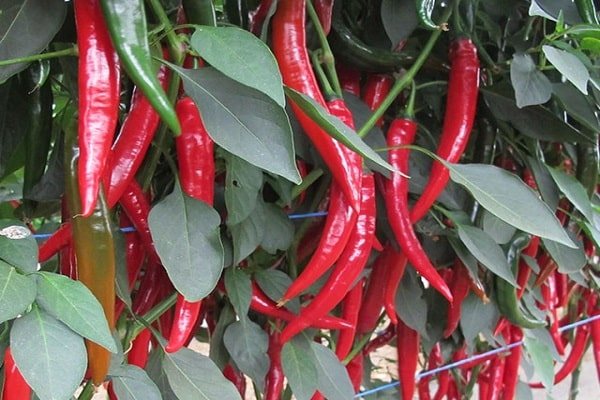

- Pepper Eagle Claw
A versatile hybrid with a pronounced peppery aroma. The taste is spicy, but very spicy. The plant belongs to specimens with a medium-early ripening period. Wall thickness about 3.5 mm. The vegetables are quite large, the mass can reach from 60 to 70 grams. The shade is bright red, the shape is elongated, elongated. Differs in good resistance to various diseases. Bushes are small, compact, the height of the stem does not exceed 80 cm. From one square meter, you can collect up to 5 kg of the crop.
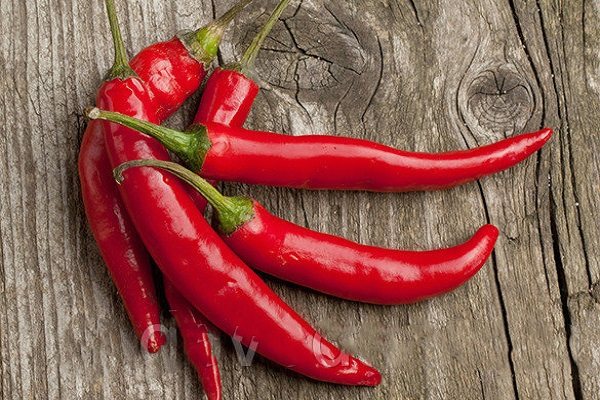

- Homer's pepper
It belongs to the first generation hybrids. Early ripe. It is most often used for the preparation of seasonings, as well as for canning. Unripe peppers of a rich emerald hue, as they ripen, acquire a scarlet color. Fruit shape is proboscis, elongated. Ripe vegetables do not taste very hot. The thickness of the walls is from 2 to 4 cm. The weight of one ripe pepper does not exceed 40 grams. The fruiting period is long. Harvesting is possible from August to October.
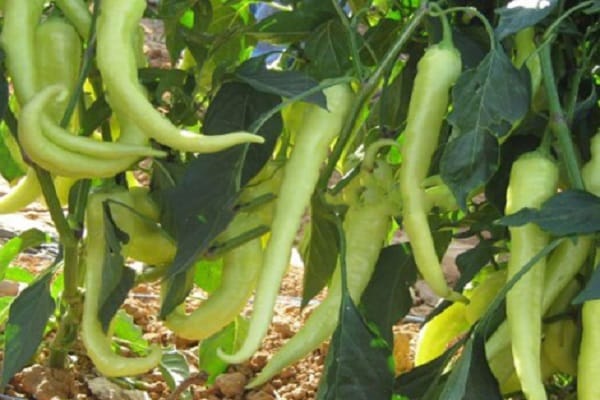

- Red Fat
See also
Description of the Ramiro pepper variety, features of cultivation and careRead
Red Fat Man refers to hybrids with a medium-early ripening period for vegetables. For growing on the territory of Russia, hot pepper is suitable mainly in greenhouses. This is due to the fact that this variety has a long growing season. As a rule, it is 3-4 months. Outdoors, the Red Tolstyak variety is grown only in the southern regions. Ripe fruits are large and can reach 100 grams. The skin is smooth, not ribbed, of a scarlet hue. The taste is very spicy.


- Peter's finger
This variety differs from other hot pepper hybrids in its unusual shape. You can compare its shape with a finger. But the most interesting thing is that this form is not the result of the activities of breeders. This variety is also called Chilly Willie. The homeland of this hybrid is America. In length, the vegetable can grow up to 10 cm.Diameter is about 2.5 cm.The pungency level of the pepper is not very high. Chilli Willie is a very rare and expensive variety, which is rather problematic to buy in Russia.


- Hungarian Yellow
The main advantage of the Hungarian Yellow hybrid is its resistance to low temperatures. It belongs to the early maturing, from the moment of sowing the seeds to the appearance of the peppers, it takes from 90 to 100 days. The bushes are small, compact. The stem does not grow more than 55 cm in height. The shape of the vegetables is proboscis, elongated. Unripe vegetables of a light green color, as they ripen, acquire a rich yellow color. Hot peppers have a spicy taste. Perichki mass from 40 to 55 gr. When growing this plant, you need to know that it loves abundant watering, for which it is advisable to use warm water.
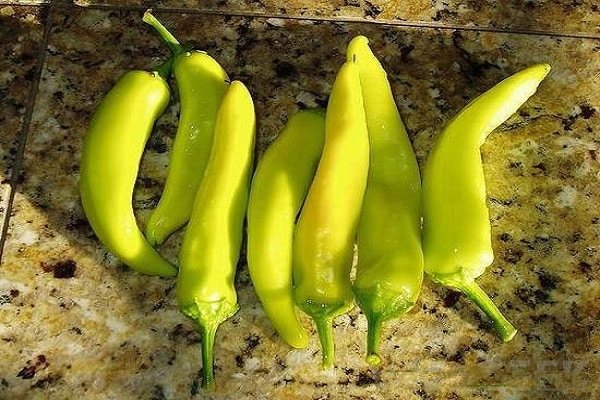

- Thai Dragon
Bitter pepper Thai Dragon belongs to the first generation hybrids. The bushes of this plant are tall, the height can reach 1.5 meters. The plant is highly leafy, the leaves are dark green in color. The peppers are small, but there are many of them on the bush. The mass of one vegetable is about 20 grams. In length up to 8 cm. From the moment of sowing the seeds into the soil and until the first harvest is collected, no more than 105 days pass. The main feature of the Thai Dragon is that it can be grown even in a pot at home. The ripe fruit tastes very spicy.


- Peppers Falcon Beak
See also
Why do pepper seedlings curl leaves and what to doRead
One of the hottest peppers. Unripe fruits are colored in a rich emerald hue, as they ripen, they turn bright red. The shape of the fruit is conical. Peppers are small in size, grow in length about 29 mm, wall thickness from 3 to 5 mm. Average weight - up to 10 grams. Suitable for cooking seasonings. Due to the fact that the bushes are very compact, the Falcon's Beak can be cultivated even at home.


- Miracle of the Moscow region
Peppers Miracle of the Moscow Region is characterized by the fact that the bush is low-leafed, not spreading. The fruits grow alone. On average, from 14 to 20 peppers can form on one plant. Tall, the main stem can grow up to 1.5 meters. The vegetables are elongated, pointed towards the bottom, drooping. The skin is glossy, without ribbing. The shade of ripe vegetables is scarlet. On average, the mass of vegetables reaches from 30 to 55 grams. The taste of peppercorns is not very spicy with a specific aroma.


- Elephant trunk
Peppers Elephant Trunk is a medium early plant with high yields. This variety was created by breeders from Ukraine. Bushes are low, semi-spreading, half standard. With technical ripeness, vegetables are light green, and with biological ripeness, they turn red. Not susceptible to disease and unpretentious care. It is recommended to grow seedlings in greenhouses and hotbeds.
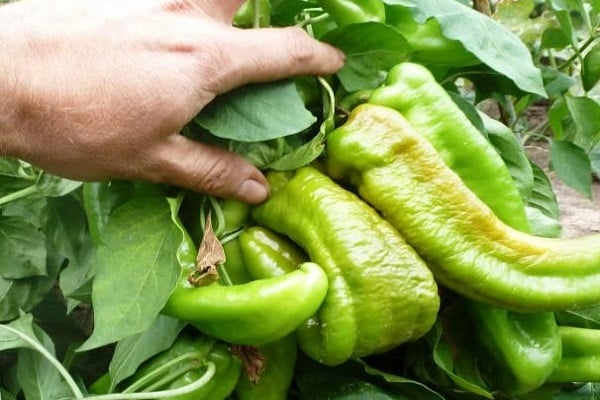

- Indian elephant
The Indian Elephant Peppers are highly productive and disease resistant. Spreading bushes, tall. Ripe peppers taste semi-sharp. Suitable for pickling. The shape is elongated, conical. On average, the weight of one vegetable does not exceed 40 grams. At technical maturity, the peppercorns are emerald in color; as they ripen, they turn dark red. The fruiting period begins in July and ends in mid-September. For 1 sq. m. it is recommended to cultivate no more than 4 bushes.


Peppers of the species Capsicum frutescens
Shrub plants are the main meaning of the name of this group. It is less popular than the previous ones. This species is represented by the well-known varieties of Tabasco and Malaga. Peppers grow in compact bushes. The fruits are elongated and red in color. They are small in size. The length of the pod does not exceed 4 cm. The advantage of Tabasco is the juiciness of the fruit, which has a moderate pungency. On the Scoville scale, it varies in the range from 30 to 50 thousand units. The varieties are suitable for growing in containers.


